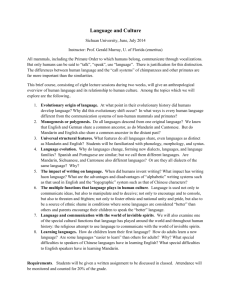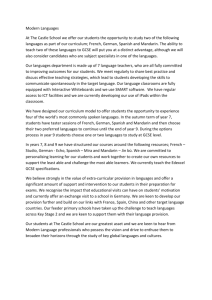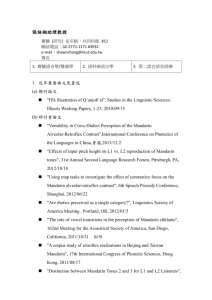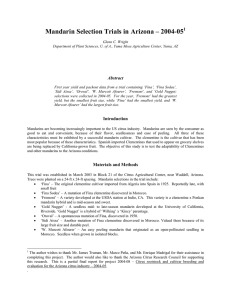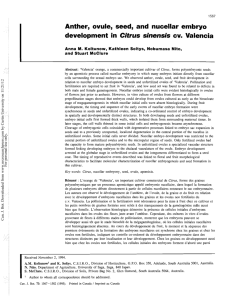variation hybridization
advertisement
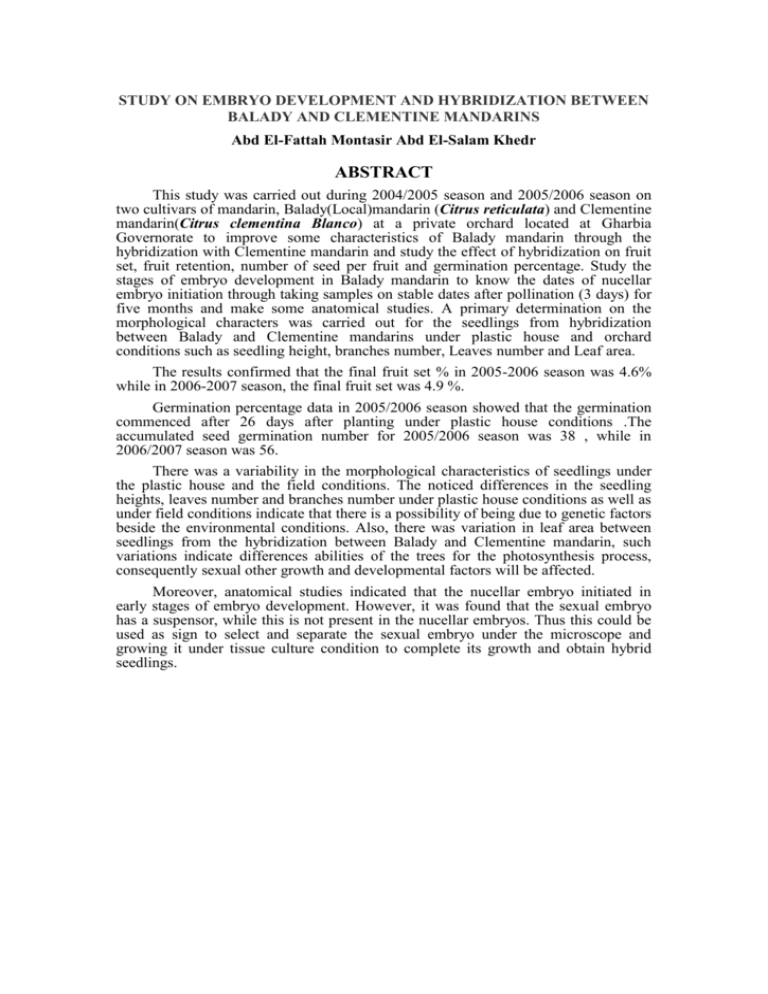
STUDY ON EMBRYO DEVELOPMENT AND HYBRIDIZATION BETWEEN BALADY AND CLEMENTINE MANDARINS Abd El-Fattah Montasir Abd El-Salam Khedr ABSTRACT This study was carried out during 2004/2005 season and 2005/2006 season on two cultivars of mandarin, Balady(Local)mandarin (Citrus reticulata) and Clementine mandarin(Citrus clementina Blanco) at a private orchard located at Gharbia Governorate to improve some characteristics of Balady mandarin through the hybridization with Clementine mandarin and study the effect of hybridization on fruit set, fruit retention, number of seed per fruit and germination percentage. Study the stages of embryo development in Balady mandarin to know the dates of nucellar embryo initiation through taking samples on stable dates after pollination (3 days) for five months and make some anatomical studies. A primary determination on the morphological characters was carried out for the seedlings from hybridization between Balady and Clementine mandarins under plastic house and orchard conditions such as seedling height, branches number, Leaves number and Leaf area. The results confirmed that the final fruit set % in 2005-2006 season was 4.6% while in 2006-2007 season, the final fruit set was 4.9 %. Germination percentage data in 2005/2006 season showed that the germination commenced after 26 days after planting under plastic house conditions .The accumulated seed germination number for 2005/2006 season was 38 , while in 2006/2007 season was 56. There was a variability in the morphological characteristics of seedlings under the plastic house and the field conditions. The noticed differences in the seedling heights, leaves number and branches number under plastic house conditions as well as under field conditions indicate that there is a possibility of being due to genetic factors beside the environmental conditions. Also, there was variation in leaf area between seedlings from the hybridization between Balady and Clementine mandarin, such variations indicate differences abilities of the trees for the photosynthesis process, consequently sexual other growth and developmental factors will be affected. Moreover, anatomical studies indicated that the nucellar embryo initiated in early stages of embryo development. However, it was found that the sexual embryo has a suspensor, while this is not present in the nucellar embryos. Thus this could be used as sign to select and separate the sexual embryo under the microscope and growing it under tissue culture condition to complete its growth and obtain hybrid seedlings.
